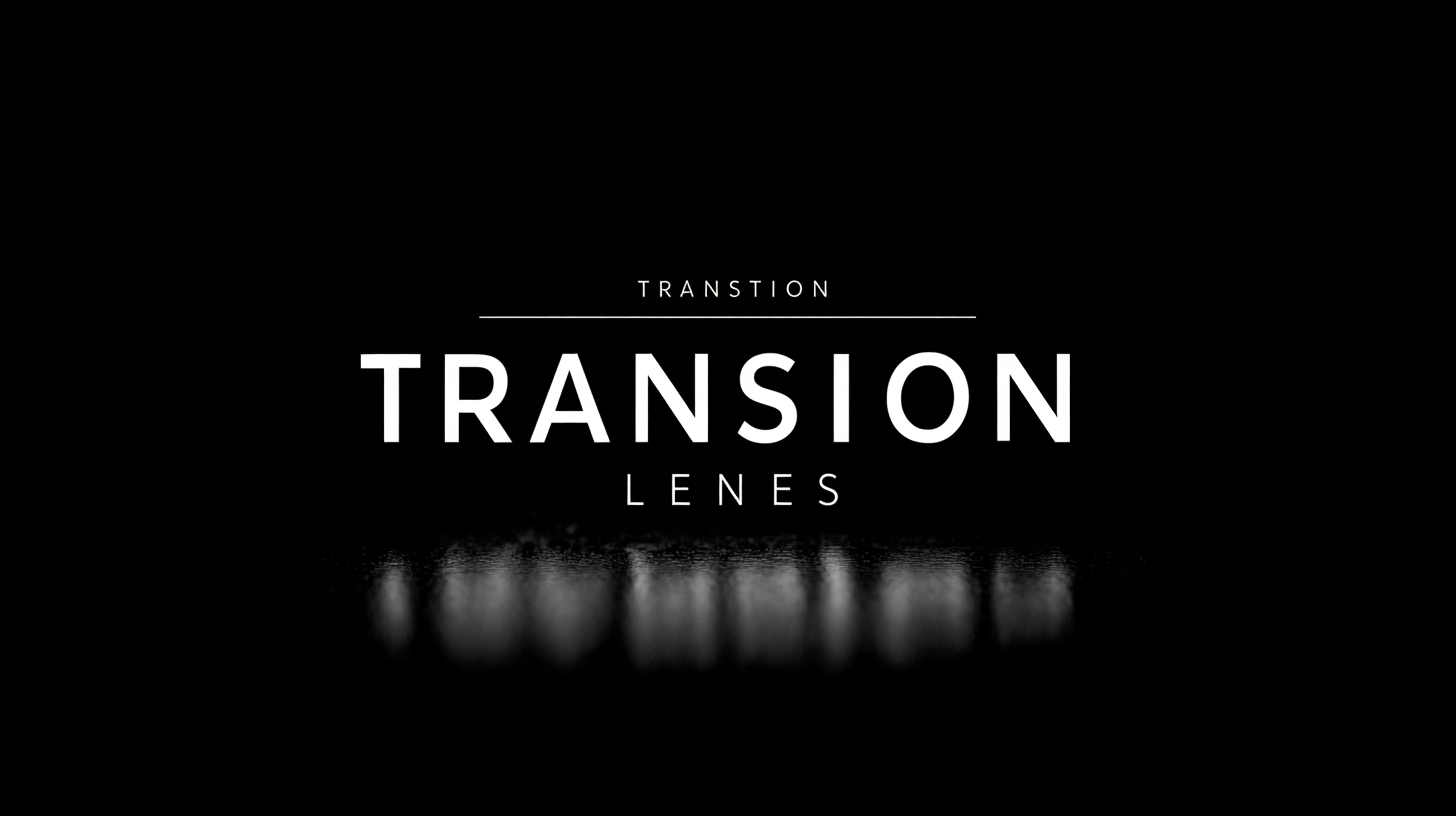In recent years, the global eyewear market has experienced significant growth, particularly in the demand for Transition Lenses, which are known for their ability to adapt to varying light conditions. According to the latest report by Grand View Research, the global prescription eyewear market is projected to reach USD 233.3 billion by 2027, with a substantial contribution from photochromic lenses, which include Transition Lenses. As consumers become more aware of the importance of eye protection and comfort, the shift towards high-quality, innovative lens technology has increased. China's leading factories are at the forefront of this movement, offering unmatched quality that builds global trust in these advanced optical products. The advantages of Transition Lenses—such as convenience, UV protection, and enhanced visual comfort—make them an essential choice for a wide range of consumers, reinforcing the value of investing in superior eyewear solutions sourced from reputable manufacturers.

The landscape of eyewear technology is evolving rapidly, particularly in the field of transition lenses. As we approach Industry 2025, advanced technologies are set to redefine how we perceive and interact with light. With innovations that enhance performance, improve responsiveness, and increase durability, the next generation of transition lenses will adapt seamlessly to various lighting conditions, providing wearers with unparalleled comfort and clarity.
**Tip:** When selecting transition lenses, consider the level of photochromic activation they offer. Depending on your lifestyle and typical exposures to sunlight, some lenses may adapt more efficiently than others. Look for options that provide a quick fade back to clear as you move indoors.
Moreover, the manufacturing process is becoming increasingly sophisticated, with China's leading factories at the forefront of this revolution. These facilities are not only enhancing the quality of materials but also implementing greener, more sustainable production methods. This shift is fostering global trust in their products, making advanced transition lenses more accessible and reliable.
**Tip:** Always check for certifications and quality controls in the lenses you choose. Reputable manufacturers adhere to rigorous standards that ensure the durability and effectiveness of their products over time, guaranteeing a worthwhile investment in your eye health.
| Dimension | 2023 Data | 2024 Projected | 2025 Goals |
|---|---|---|---|
| Market Size (USD Billion) | 8.5 | 9.2 | 10.0 |
| Year-over-Year Growth (%) | 5.0 | 8.2 | 9.0 |
| Technology Adoption Rate (%) | 25 | 35 | 50 |
| Production Capacity (Million Units) | 15 | 18 | 22 |
| Export Percentage (%) | 40 | 45 | 50 |
China has emerged as a powerhouse in the vision care industry, thanks to its leading manufacturers who prioritize quality and innovation. These factories are not only catering to domestic needs but are also shaping global standards in the production of transition lenses, which adapt to changing light conditions. By leveraging advanced technology and expert craftsmanship, they are creating products that meet the diverse demands of consumers worldwide.
The commitment of Chinese manufacturers to exceeding international quality benchmarks has fostered global trust in their products. High-quality transition lenses from these factories are revolutionizing how consumers experience vision care, offering comfort and convenience that previously seemed unattainable. As the industry evolves, these manufacturers are setting the tone for best practices in sustainability and efficiency, making a significant impact that resonates throughout the global market.
Through their relentless pursuit of excellence, they are redefining the future of vision care, ensuring that consumers everywhere can benefit from superior products.

In today's rapidly evolving landscape of smart manufacturing, the production of transition lenses is experiencing significant enhancements in quality and efficiency. With the integration of advanced technologies, manufacturers are not only able to increase output but also maintain stringent quality controls. This revolution is transforming how transition lenses are produced, ensuring that they meet global standards and build trust among consumers.
Tips: Embracing technologies such as automation and real-time data analytics can greatly improve production workflows. For businesses aiming to enhance product quality, investing in AI-driven quality control systems is crucial. These innovations provide manufacturers with the tools needed to ensure that each lens produced delivers unparalleled performance.
As companies adapt to these advancements, they stand to benefit not only from cost reductions but also from improved customer satisfaction. Upgrading to a smart manufacturing model creates a more agile production environment where responsiveness to market demands is heightened. Ultimately, leveraging smart manufacturing technologies is key to fostering lasting global trust in high-quality transition lenses.
Transition lenses have revolutionized the eyewear industry, providing consumers with a versatile solution that adapts seamlessly to changing light conditions. The global perspective on these innovative lenses highlights the essential role of consumer trust in their widespread adoption. As manufacturers in China continue to deliver unmatched quality, the credibility of transition lenses grows, reassuring consumers that they are investing in a reliable product. This trust is critical in a competitive market, where consumers are inundated with options and varying degrees of quality.
As the demand for transition lenses increases, so does the responsibility of manufacturers to uphold and enhance this trust. Ensuring consistency in quality and performance is vital, especially in global markets where consumer expectations can differ significantly. Open communication about product benefits, coupled with transparent manufacturing practices, fosters a strong relationship between producers and consumers. As leading factories in China set exemplary standards, they pave the way for a bright future for transition lenses, cementing their position as a trusted choice in eyewear across the globe.
The lens production industry is undergoing a significant transformation as manufacturers increasingly prioritize sustainability in their operations. As global awareness of environmental issues grows, factory leaders in China are stepping up to establish best practices that not only enhance product quality but also minimize their ecological footprint. By investing in renewable energy, optimizing resource use, and adopting eco-friendly materials, these factories are setting new standards for responsible production.
Incorporating sustainable practices not only appeals to environmentally conscious consumers but also builds trust among industry stakeholders. Transition lenses, known for their adaptive functionality, are now being produced under stringent sustainability measures, showcasing a commitment to both innovation and the planet. As leading factories implement these practices, they elevate the entire supply chain, encouraging other manufacturers worldwide to follow suit. This shift signifies a collective movement towards a more sustainable future in lens production, where quality and environmental responsibility go hand in hand.


